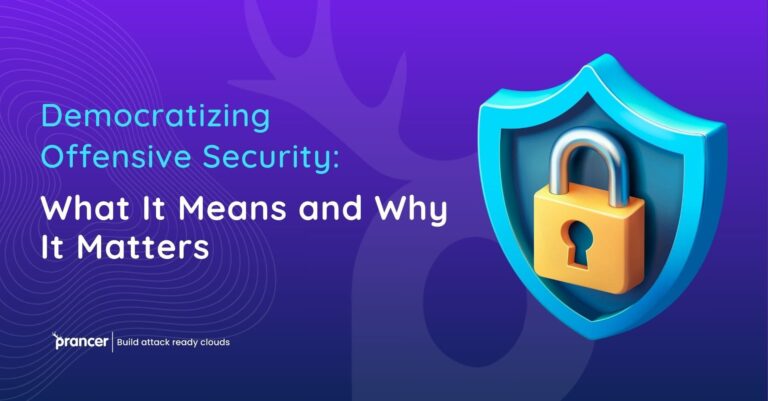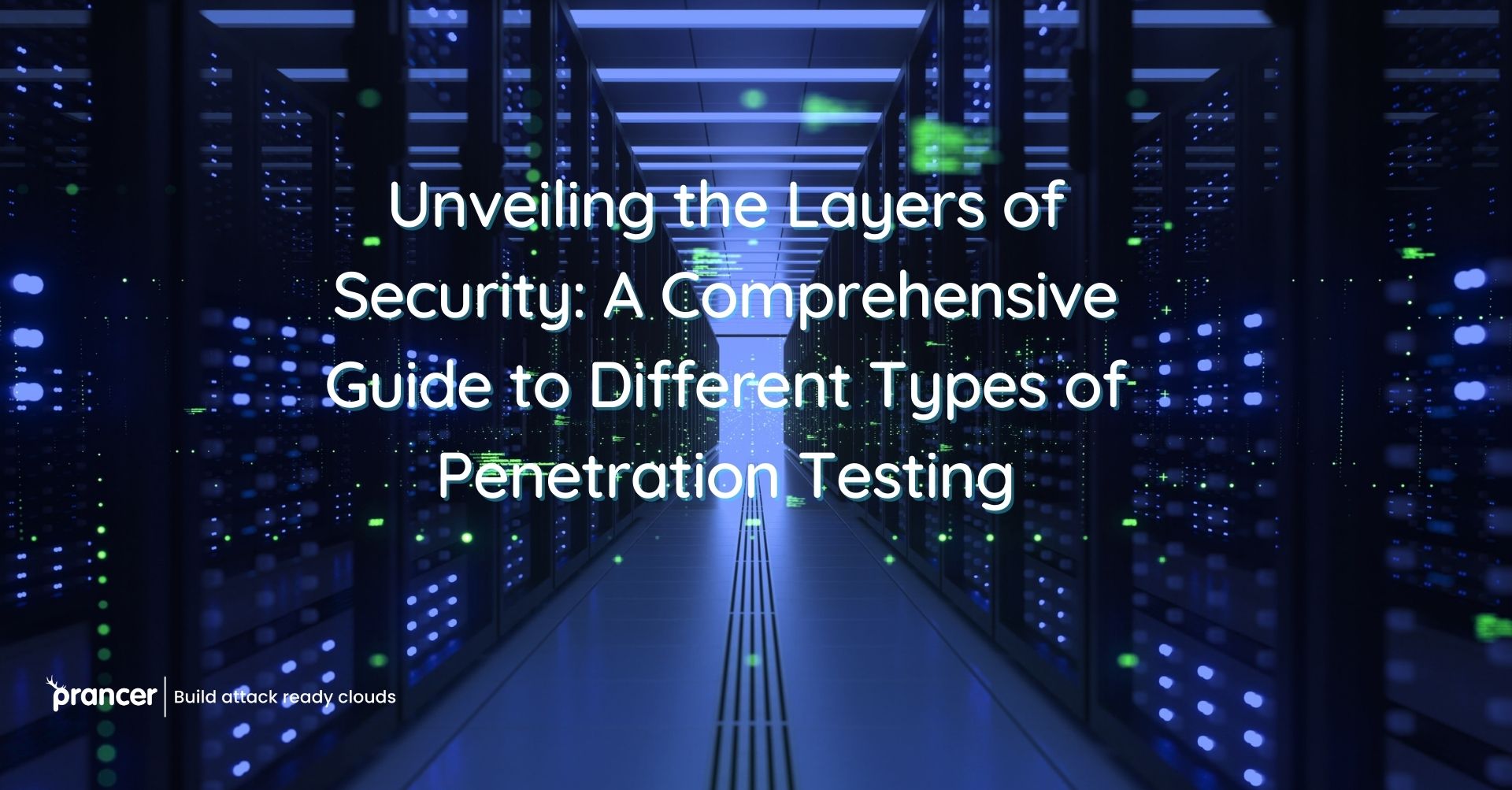

In the ever-evolving digital sphere, organizations must remain vigilant against potential cyber threats. This is where penetration testing types come into play as crucial tools for preemptively exposing vulnerabilities that cybercriminals could exploit.
In the cyber-threat-filled digital world, keeping at all times is mandatory. Include one of the essential types in the array of penetration testing under Automated Penetration Testing. With Automated Penetration Testing IT systems are less vulnerable to attacks because their weaknesses are exposed even before cybercriminals take advantage of them.
This guide explores various penetration testing types, their distinctive methodologies, and their roles in bolstering organizational defenses. We will also shed light on how Prancer’s cutting-edge cloud security solutions can align with these testing types, ensuring a fortified and secure digital ecosystem.
Penetration testing types are diverse, each targeting a specific area of an organization’s infrastructure, network, or applications. The main types include:
In the sphere of cybersecurity, Prancer’s role in enabling different penetration testing types stands pivotal. As a premier cloud security platform, Prancer harmonizes impeccably with a diverse range of penetration testing methodologies, paving the way for enterprises to meticulously evaluate their cloud-based assets.
Prancer’s platform integrates advanced automation and comprehensive scanning functionalities. It enables businesses to spotlight vulnerabilities, gauge potential threats, and rank remediation tasks.
Beyond this, Prancer offers an array of testing types – from black box to white box, and web application assessments. It enables enterprises to fine-tune their security testing to meet bespoke needs. This empowers organizations to chart a confident course through the complex world of penetration testing. It strengthens their protective measures against ever-evolving cyber threats.
Prancer’s relentless pursuit of excellence allows organizations to wield the power of next-gen technology. It protects their digital footprint, ensuring a future of resilience and security. With Prancer, entities can:
In our digital world, staying ahead of cyber threats is a must. Various types of penetration testing serve as preemptive measures to unveil and fix vulnerabilities. This guide dives into these types and how Prancer’s cloud security solutions dovetail with them to bolster organizational defenses. Different defense angles From Black Box Testing’s external assault simulations to Social Engineering Testing’s check against deceitful ploys, every type has its own unique property. These methodologies are in line with Prancer’s platform, providing a customized route to strong security. Prancer enables identifying potential weaknesses and warding off the ever-changing face of cyber threats so that it is a practical possibility. It is about active defense in today’s fast-changing world of cybersecurity.
In the fast-moving area of internet security, teams need to carefully pick between checking for weaknesses and scanning for problems to keep their resources safe. Testing for breaking in, is a good method that uses hackers who act right to find weaknesses. They use tricks like real cyber attacks and check your safety carefully. On the other hand, scanning for vulnerabilities is a more automatic and wide method that finds well-known weak spots without trying to use them actively. This guide shows that you need a good plan that mixes deep testing like penetration testing with broad search skills of scanning for weakness.
Prancer, a big name in cloud safety tools, has come up with an advanced way that combines these two methods. Their platform lets groups gain from detailed penetration testing work and also uses wide-ranging checking of weaknesses. This mix makes sure we have good protection all around. It helps companies find out, rank, and handle weak spots properly. Prancer makes it easy for businesses to deal with online security problems. This keeps them safe from new threats that might come up.
In the current cybersecurity world, Automated Penetration Testing is a vital resource offering organizations an advance warning strategy to secure their digital assets. The state-of-the art method combines ethical hacking and modern automation, providing holistic testing of digital infrastructures against emerging cyber threats. Automated Penetration Testing is integrated into the Prancer’s platform, developed by a leading cloud security solutions provider.
Automated Penetration Testing, such as Prancer offers multiple types of testing aimed at different elements in the digital infrastructure. From Black Box Testing as a simulation of external attacks without any knowledge about the system to WhiteBox Testing which allows for deep analysis due to full insight into the system. Prancer’s platform stands out in the area of specialized test cases, combining black box , white and gray box tests with web application and network security evaluations.
It helps to determine, quantify and prioritize vulnerabilities in a very efficient manner. Its ability to automate scanning and its comprehensive testing methods deliver a complete security assessment. Through the implementation of Prancer’s innovative approach, organizations benefit from an effective means to defend against cyber threats providing a secure and reliable digital landscape in such continuously changing online danger.
A variety of pen tests are an indispensable aid in helping organizations defend their digital resources from threats by cybercriminals. Through a variety of assessments, an organization can identify weaknesses and determine the degree to which they exist. It’s only then possible to prioritize remedial steps.
Prancer’s commitment to providing comprehensive cloud security solutions meshes perfectly with these various types of Automated penetration testing. With Prancer, organizations can assess their current situation with confidence and take steps to reduce risk factors. Once this is complete they will be in a better place of defense against cyber threats. By joining forces with Prancer, organizations can keep ahead of the curve in this changing world of cybersecurity.
